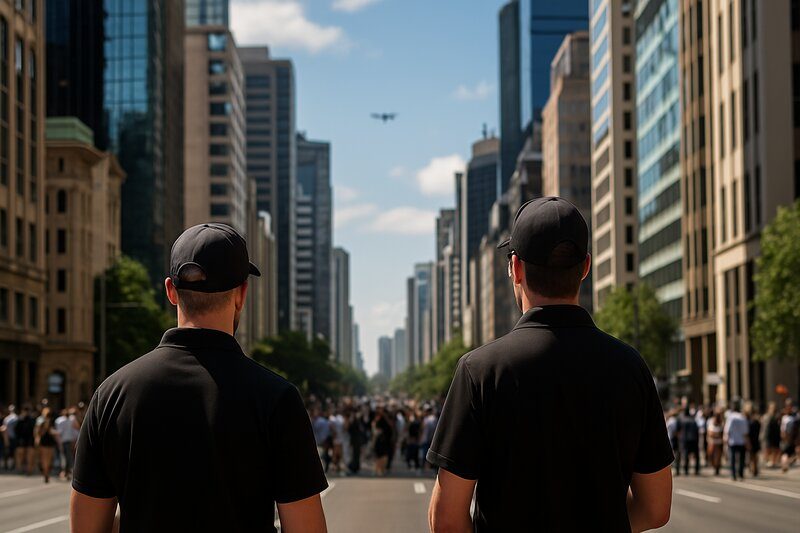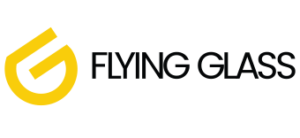🚁 Need help getting your OONP approval?
Flying Glass is one of Australia’s most experienced drone consultancies for Operations Over or Near People (OONP) approvals. We were among the first to be approved — and now we help other operators gain their own exemptions, fast and with confidence.
From choosing the right parachute system to writing your Operational Safety Case (OSC), we provide hands-on support at every step.
OONP in Australia: How Flying Glass Helps You Fly Over People Safely and Legally
When it comes to drone operations in Australia, Operations Over or Near People (OONP) is one of the most tightly regulated – and for good reason. Flying directly over people who aren’t part of your operation brings serious risks, which is why CASA has very strict rules around it.
At Flying Glass, we are proud to say that we were one of the first drone operators in the country to be approved for OONP flights. And today, we don’t just fly over people – we help other operators obtain their own exemptions through our tailored drone consultancy services.
If you’re looking to unlock new opportunities and fly safely and legally over crowds, construction sites, or public events, here’s what you need to know.

What Does OONP Actually Mean?
OONP stands for Operations Over or Near People. In simple terms, it’s flying a drone over people who:
- Are or are not directly involved in the operation.
- Have or have not provided informed consent.
- May or may not be protected by a structure (like being inside a building).
Under Australia’s CASR Part 101 regulations, standard drone operations prohibit flying over people unless you have:
- A CASA Instrument of Approval specifically authorising you to do so.
- Additional safety measures like a certified parachute system installed on your drone.
Without these, flying over people – even by accident – can land you in serious trouble.
Flying Glass: Among the First to be Approved for OONP
When CASA first began issuing Instruments of Approval for OONP flights, Flying Glass was one of the very first commercial drone operators to meet the stringent requirements. Our team worked closely with CASA during those pioneering stages to help shape what safe OONP operations look like today.
That real-world experience now gives our consultancy clients a serious advantage. We know exactly what CASA expects, because we’ve been through it – and we stay involved as rules and technology evolve.
If you want real-world, proven expertise, Flying Glass has it.
What an OONP Approval Actually Allows
Here’s where it gets a bit technical – and where most drone operators get confused.
Every operator’s OONP approval is different. Your CASA Instrument may:
- Specify which drones you can use.
- State the conditions you must meet (e.g., parachute fitted, operating height limits).
- Outline the approved scenarios (e.g., filming events, construction surveys, emergency response).
- Impose restrictions on where, when, and how you can fly.
This is why getting the right advice – before you apply – is crucial.
Flying Glass works with you to:
- Assess your operational needs.
- Select suitable drones and safety systems.
- Develop a strong operational safety case.
- Prepare and submit your CASA application.
- Support you through audits and renewals.
🎯 We Make OONP Happen
Getting CASA approval to fly over or near people is complex — but you’re not alone. Flying Glass supports operators across Australia through:
- ✅ Parachute selection & installation
- ✅ Operational Safety Case (OSC) writing
- ✅ CASA liaison & submission support
- ✅ Compliance training & documentation
Parachutes: Essential for OONP Compliance
One thing nearly all OONP approvals have in common? Parachutes. CASA expects that any drone flying over people must have a certified parachute recovery system installed. This dramatically reduces the risk of serious injury in case of an in-flight failure.
Flying Glass:
- Can advise on parachute systems for a range of DJI drones, including Mavic 3, Matrice 300, and upcoming models like the Mavic 4.
- Works with CASA-approved systems from leading suppliers.
- Advises on parachute deployment testing and maintenance, which are often required as part of your ongoing compliance.
If you don’t have a parachute yet – or if you’re not sure which system is right for your drone – we can help.
Why OONP Approvals Matter for Drone Operators
Having the ability to fly over people legally opens up massive opportunities for drone businesses in Australia, including:
- Events and media coverage: Capture festivals, races, sports events.
- Film and TV: Aerial filming in busy public areas, CBDs, events, and anywhere people are present – without requiring road closures or public clearances.
- Construction progress monitoring: Film active sites without stopping work.
- Emergency response: Support search and rescue, disaster relief operations.
- Surveying and inspection: Work in urban environments without major road closures.
Without an OONP approval, you simply can’t take on these jobs – at least not without serious legal risk.
🚨 Don’t Have OONP Approval Yet?
We can do it for you. Flying Glass holds an active CASA OONP approval and can legally carry out drone flights over people on your behalf — fully insured and compliant.
Whether it’s an urgent TV shoot, event coverage, or a commercial campaign — we’ll get the job done safely and legally.
Operators with OONP approvals are highly sought-after, often commanding higher fees and exclusive contracts.
It’s a serious investment in your drone business’s future.
What’s Involved in Getting an OONP Approval?
OONP is not a tick-box exercise. CASA rightly treats it as high-risk, and the approval process is detailed and demanding.
Here’s an overview:
- Select a compliant drone: Typically under 2kg with a parachute fitted.
- Parachute installation and testing: Must meet CASA performance standards.
- Develop an Operational Safety Case (OSC): Risk assessments, mitigation plans, emergency procedures.
- Submit your application: Along with evidence of parachute testing, drone registration, and ReOC (Remote Operator Certificate).
- Undergo assessment: CASA reviews your case and may request additional information or conditions.
- Instrument of Approval issued: With specific conditions tied to your operation.
At Flying Glass, we can help you navigate this process successfully – saving them time, stress, and rework.
We offer full-service consultancy or modular support depending on how much help you need.
Flying Glass OONP Consultancy Services
Here’s what you can expect when you work with us:
- Initial Consultation: We review your operational needs and capabilities.
- System Recommendation: We match you with the right drone and parachute.
- Documentation Support: We help you build your OSC and supporting documents.
- Parachute Supply and Installation: From ordering to certified fitting.
- Training: Emergency procedures, maintenance, and ongoing compliance.
- Application Submission and Support: We liaise with CASA on your behalf.
We can also help you prepare for CASA audits after your approval is granted.
In short: we make OONP happen.
Common Pitfalls in OONP Applications (and How to Avoid Them)
Many operators fail their OONP applications because they:
- Use drones without CASA-approved parachute systems.
- Submit generic, incomplete safety cases.
- Fail to properly document parachute deployment tests.
- Don’t understand the full operational implications.
Flying Glass ensures you get it right the first time. We know what CASA wants – and just as importantly, what they don’t want.
Our real-world experience flying under OONP conditions gives us practical insights that theory alone can’t match.
Ready to Fly Over People? Here’s How to Start
If you’re serious about flying drones over crowds, streets, and active work sites legally and safely, your first step is getting in touch.
Flying Glass offers a range of consultancy packages to suit operators at every level – from solo pilots to enterprise teams.
Visit our Drone Consultancy page to learn more, or get in touch directly to discuss your goals.
If you need inspiration, check out the Flying Glass Showreel to see what’s possible when you combine innovation, expertise, and compliance.
📞 Let’s Get You Approved
Flying Glass has helped operators across Australia get their OONP approvals faster — with fewer knock-backs, and the confidence to fly legally.
Whether you’re just starting or stuck mid-application, we’ll help you navigate CASA, write a strong safety case, and get your parachute and documentation right the first time.

